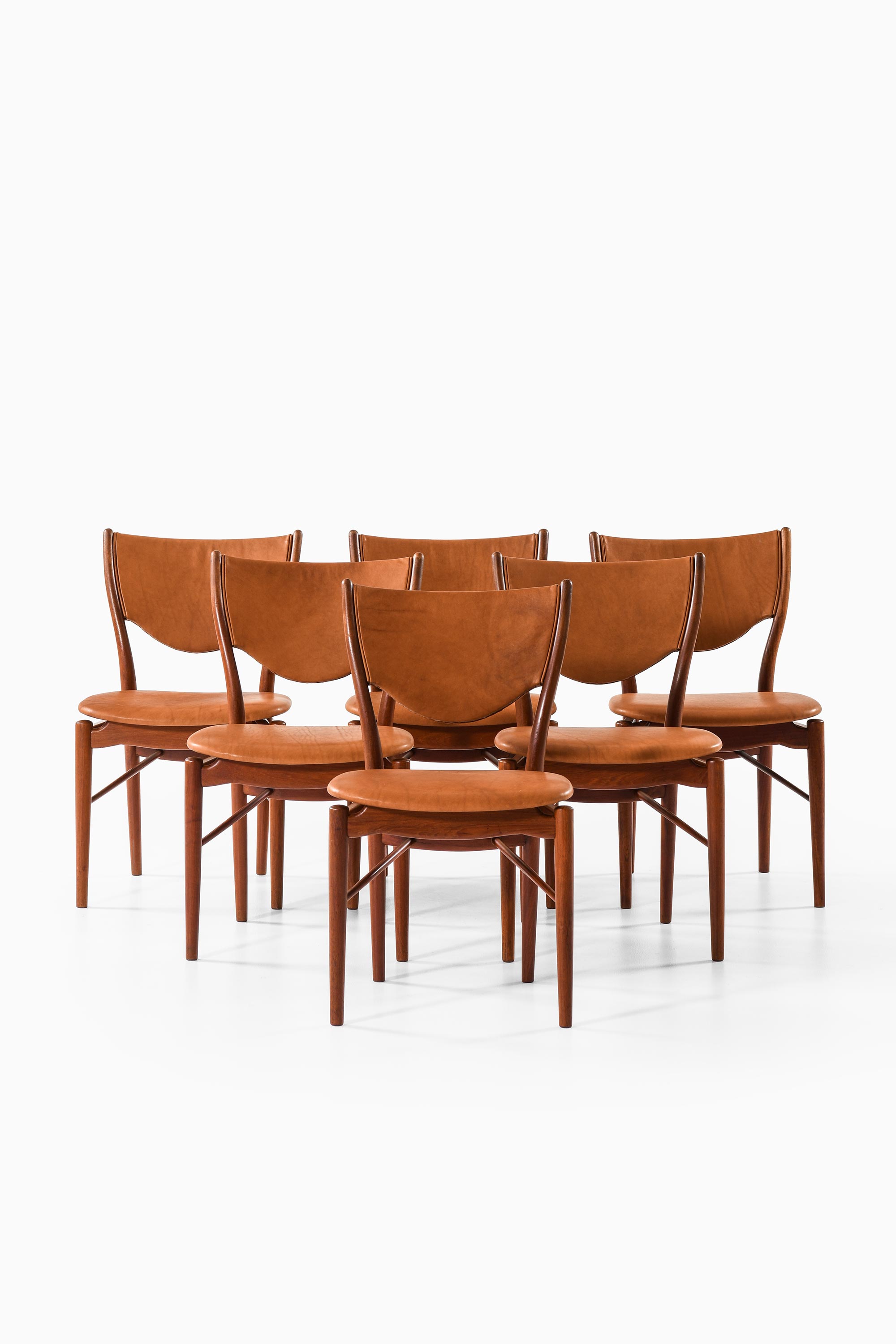
Finn Juhl
Finn Juhl (1912 – 1989) was born on January 30, 1912, in Frederiksberg, Denmark, and became one of the most influential figures in mid-century Danish modern design. Renowned for his sculptural approach to furniture design, Juhl redefined the relationship between form and function, blending craftsmanship, comfort, and artistic expression in ways that set him apart from his contemporaries.
Originally planning to study art history, Juhl shifted his focus to architecture and graduated from the Royal Danish Academy of Fine Arts in 1934. He worked under the prominent architect Vilhelm Lauritzen, gaining valuable experience in functionalist principles, though his passion for furniture design soon took center stage. By the 1940s, Juhl began designing furniture that broke with traditional norms, prioritizing organic forms and emotional connection over rigid functionality.
Juhl’s designs are characterized by their sculptural aesthetics, soft curves, and innovative construction techniques. He often drew inspiration from modern art and the human body, creating furniture that appeared lightweight and graceful while offering exceptional comfort. His iconic "Chieftain Chair," designed in 1949, exemplifies his approach, combining luxurious materials, flowing lines, and a commanding presence.
One of Juhl's groundbreaking contributions was his pioneering use of teak, a material that became synonymous with Danish modernism. He collaborated closely with master cabinetmakers such as Niels Vodder, whose craftsmanship brought Juhl’s ambitious designs to life. Juhl’s furniture often featured floating seat and backrest elements, which gave his pieces a sense of lightness and set a new standard for modern furniture design.
Juhl gained international recognition in the 1950s, particularly after showcasing his work at the "Good Design" exhibitions organized by the Museum of Modern Art (MoMA) in New York. He was also instrumental in introducing Danish design to the global stage when he furnished the Trusteeship Council Chamber at the United Nations headquarters in New York in 1951. This project highlighted his ability to blend functional design with an inviting, human-centered aesthetic.
Though Juhl’s work was initially divisive in Denmark, where some critics found his designs too avant-garde, his influence grew over time. He received numerous accolades during his lifetime, including the prestigious C. F. Hansen Medal in 1978. His designs have since become highly collectible and are frequently exhibited in museums such as MoMA and the Designmuseum Danmark in Copenhagen.
Finn Juhl passed away on May 17, 1989, but his legacy endures. Today, his furniture is celebrated for its timeless appeal and continues to be produced by companies like Onecollection under the "House of Finn Juhl" brand. Juhl’s innovative approach to design, which emphasized the fusion of art and functionality, remains a cornerstone of modern design philosophy and has inspired generations of designers worldwide.


Finn Juhl dining chairs
(6 PCS)
Finn Juhl bench

Finn Juhl Chieftain chair

Finn Juhl Judas dining table

Finn Juhl Judas dining table

Finn Juhl bookcase

Finn Juhl sofa

Finn Juhl armchairs

Finn Juhl coffee table
